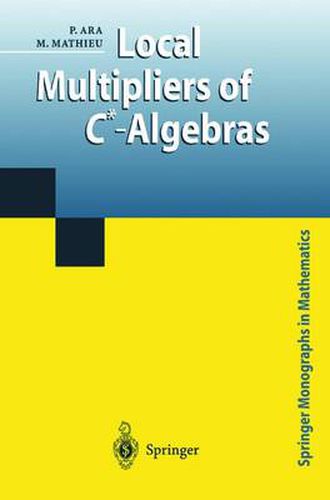Readings Newsletter
Become a Readings Member to make your shopping experience even easier.
Sign in or sign up for free!
You’re not far away from qualifying for FREE standard shipping within Australia
You’ve qualified for FREE standard shipping within Australia
The cart is loading…






This title is printed to order. This book may have been self-published. If so, we cannot guarantee the quality of the content. In the main most books will have gone through the editing process however some may not. We therefore suggest that you be aware of this before ordering this book. If in doubt check either the author or publisher’s details as we are unable to accept any returns unless they are faulty. Please contact us if you have any questions.
Many problems in operator theory lead to the consideration ofoperator equa tions, either directly or via some reformulation. More often than not, how ever, the underlying space is too ‘small’ to contain solutions of these equa tions and thus it has to be ‘enlarged’ in some way. The Berberian-Quigley enlargement of a Banach space, which allows one to convert approximate into genuine eigenvectors, serves as a classical example. In the theory of operator algebras, a C*-algebra A that turns out to be small in this sense tradition ally is enlarged to its (universal) enveloping von Neumann algebra A . This works well since von Neumann algebras are in many respects richer and, from the Banach space point of view, A is nothing other than the second dual space of A. Among the numerous fruitful applications of this principle is the well-known Kadison-Sakai theorem ensuring that every derivation 8 on a C*-algebra A becomes inner in A , though 8 may not be inner in A. The transition from A to A however is not an algebraic one (and cannot be since it is well known that the property of being a von Neumann algebra cannot be described purely algebraically). Hence, ifthe C*-algebra A is small in an algebraic sense, say simple, it may be inappropriate to move on to A . In such a situation, A is typically enlarged by its multiplier algebra M(A).
$9.00 standard shipping within Australia
FREE standard shipping within Australia for orders over $100.00
Express & International shipping calculated at checkout
This title is printed to order. This book may have been self-published. If so, we cannot guarantee the quality of the content. In the main most books will have gone through the editing process however some may not. We therefore suggest that you be aware of this before ordering this book. If in doubt check either the author or publisher’s details as we are unable to accept any returns unless they are faulty. Please contact us if you have any questions.
Many problems in operator theory lead to the consideration ofoperator equa tions, either directly or via some reformulation. More often than not, how ever, the underlying space is too ‘small’ to contain solutions of these equa tions and thus it has to be ‘enlarged’ in some way. The Berberian-Quigley enlargement of a Banach space, which allows one to convert approximate into genuine eigenvectors, serves as a classical example. In the theory of operator algebras, a C*-algebra A that turns out to be small in this sense tradition ally is enlarged to its (universal) enveloping von Neumann algebra A . This works well since von Neumann algebras are in many respects richer and, from the Banach space point of view, A is nothing other than the second dual space of A. Among the numerous fruitful applications of this principle is the well-known Kadison-Sakai theorem ensuring that every derivation 8 on a C*-algebra A becomes inner in A , though 8 may not be inner in A. The transition from A to A however is not an algebraic one (and cannot be since it is well known that the property of being a von Neumann algebra cannot be described purely algebraically). Hence, ifthe C*-algebra A is small in an algebraic sense, say simple, it may be inappropriate to move on to A . In such a situation, A is typically enlarged by its multiplier algebra M(A).